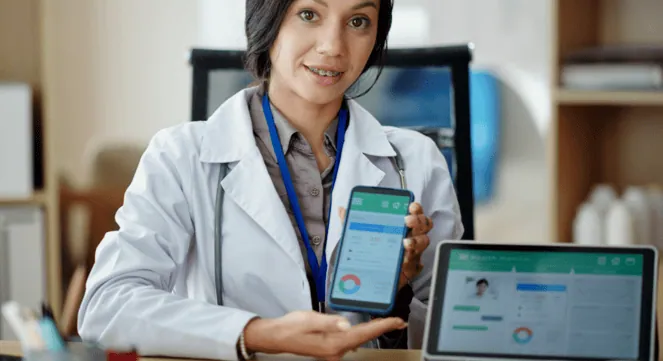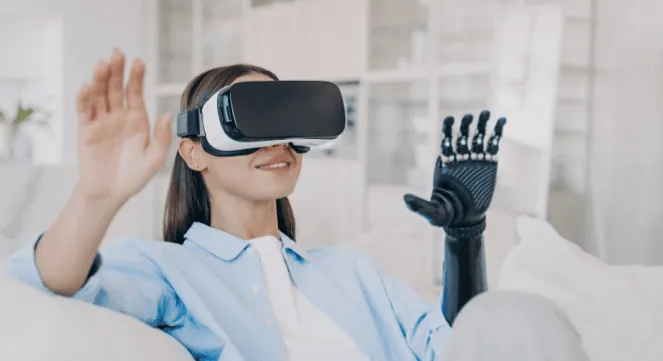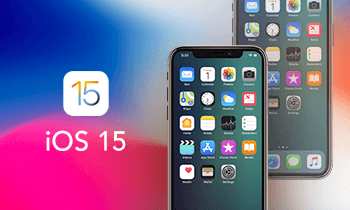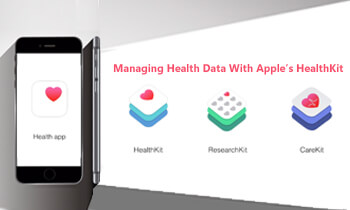IoT in healthcare has been a rapidly growing field in the market where more people are relying on smart devices in healthcare to build intelligent technologies for their day-to-day lives.
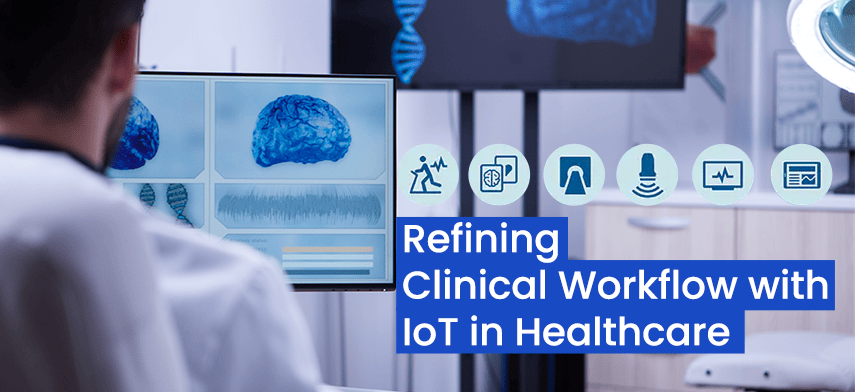
The smart healthcare building market is set to reach USD 109.48 billion by the year 2026. With this growth in the market, IoT applications in healthcare will evolve to meet the evergrowing demands of the digitally acclaimed and recognized world. If there are opportunities to innovate in the care delivery services, IoT will push forth the forward-thinking ideologies towards vendors to produce intuitive and innovative solutions to enhance security, comfort, and convenience.
The benefits of IoT in healthcare embrace innovation in the industry and are constantly appearing to eradicate challenges. IoT vendors are developing multiple ways to address these growing challenges and make healthcare a more sophisticated and elegant platform, even digitally.
IoT applications in healthcare range from security solutions, environmental control, wearable solutions, and cloud-connected healthcare equipment (DMEs). The positive impact of the Internet of Things and healthcare improves patient experience and enhances quality care.
Let’s take a deeper look into IoT in healthcare and how it is set to transform the digital world.
Significance of IoT in Healthcare
IoT in healthcare refers to the medically connected smart devices in healthcare used in clinical settings. The most common IoT devices are inclusive intelligent thermostats, security systems, digital signage, automated lighting, and various sensors used in day-to-day hospital and healthcare activities. These devices implemented in healthcare play a critical role in providing comfort, safety, and satisfaction to the patient population.
Medical IoT, commonly referred to as the Internet of Medical Things (IoMT) provides smart patient monitoring systems, connected healthcare devices, sensors, etc. Providers are observing effective and efficient patient care delivery through regulated IoT implementations. IoT in healthcare offers a significant comfort component while taking care of additional health tracking and safety benefits for patients and providers.
The growing niche of IoMT in the field of healthcare Internet of Things is transforming the strategic planning and utilization of IoT devices in hospital-based environments. Combined with the standard IoT solutions, IoT app development services can create intelligent locks, lighting, and other IMT devices completely optimized for the healthcare environment.
How Can Organizations Use IoT in Healthcare?
There are various ways to incorporate IoT applications in healthcare. The ideas and aspirations of using IoT in healthcare are currently proving to be an excellent force for transforming the sector into a more capable and digitally advanced market. IoT and IoMT applications are evolving constantly, and the technologies are becoming more sophisticated by the year.
The application used by IoT in healthcare settings can enhance decision-making by doctors, facilitate patient comfort, and make healthcare environments secure and safe for providers and patients.
-
Patient comfort and outcomes
In care facilities and hospitals, the environment can be quite unpleasant for patients. It is said that patients and their families request accessibility, comfort, and privacy when in a hospital space. Security is another aspect that needs to be prioritized. IoT health monitoring systems like smart thermostats and customizable hospital lighting can provide a pleasant experience to patients and offers providers the control of care administered. Bed sensors can monitor the patient’s behavior and notify the staff if anything is wrong. Wearable technologies are another helpful implementation of medical IoT devices improving patient outcomes by providing real-time health data and alerts when potential health concerns arise.
-
Physicians and providers make better decisions
IoT monitoring systems in healthcare offer providers an opportunity to make sound medical decisions and provide better quality care delivery service for patients. IoMT devices like connected medical sensors allow providers to collect relevant data without conducting physical examinations. Remote health monitoring, an aspect of wearable technology, can provide reliable support in tracking health vitals, physical activities, etc., and inform providers to adjust treatment plans accordingly. These smart devices in healthcare directly upload the data to a cloud database, and instantly the IoT system in place can help to compile the information and produce the necessary reports. This enhances collaborations between providers and allows access to the complete patient data.
-
IoT in Healthcare and Hospital facilities
The traditional IoT security services can be used in healthcare and hospital facilities to make the environment more secure and safe for patients and providers. Installing smart locks and security systems enables protocols to be in place according to the pre-set organizational programs, like lockdown cases. IoT maintenance sensors can notify facility managers regarding potential risks and threats. The temperature sensors can ensure the safe storage of food, medications, and blood. Occupancy sensor monitors provide data regarding the waiting areas and the capacity the hospital has to withhold critical patients or divert them to other nearby hospitals. Digital wayfinding systems ease the opportunity for easier hospital navigation. These ideas are just some of the opportunities healthcare facilities can implement if they intend to invest in IoT in healthcare.
-
Benefits of IoT in Healthcare
The benefits of IoT in healthcare imprint a positive impact for various reasons. They include:
- Improved patient comfort and convenience allowing enhanced patient engagement and satisfaction by rapid recovery.
- Healthcare IoT solutions, wearable devices, and workflow of data accessibility enable providers to monitor patients with definitive precision and allow better-informed treatment strategies.
- IoT in healthcare provides enhanced security systems to keep patients, staff, and providers safe from any external variables.
- Future-proofing can provide enhanced healthcare optimizations through IoT healthcare solutions.

To Conclude,
As IoT in healthcare expands, IoMT devices will continue to evolve and we will be able to see healthcare organizations and facilities becoming more advanced digitally. This will further improve the quality of patient care outcomes, enhance patient experience, and improve the work environment for providers and healthcare staff. As we integrate more devices and data into our existing system, we will continually receive newer insights about the future of medical environments, treatment strategies, and patient care. Accessibility to data will continue to play a significant role by enabling doctors to identify ongoing trends in healthcare and discover newer digitally sound aspects of medical care which were previously difficiult to utilize and understand.
The impact of IoT in healthcare is just the start and many IoMT innovative solutions are coming forth. Our solutions can help you grow your business and optimize your existing digital healthcare services.

Author's Bio

Shailendra Sinhasane (Shail) is the co-founder and CEO of Mobisoft Infotech. He has been focused on cloud solutions, mobile strategy, cross-platform development, IoT innovations and advising healthcare startups in building scalable products.





